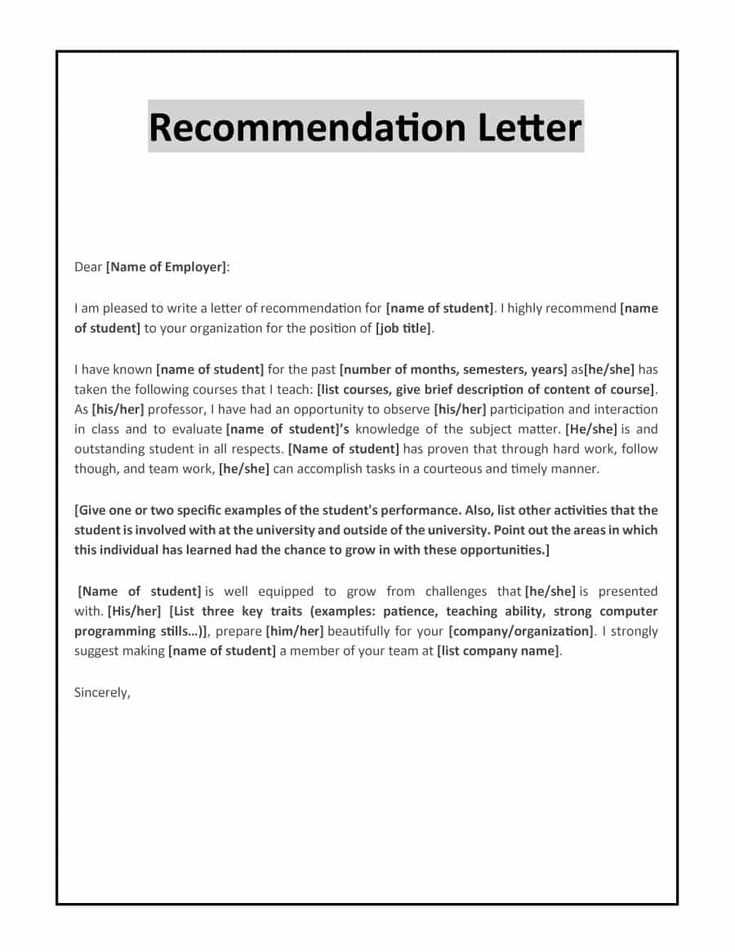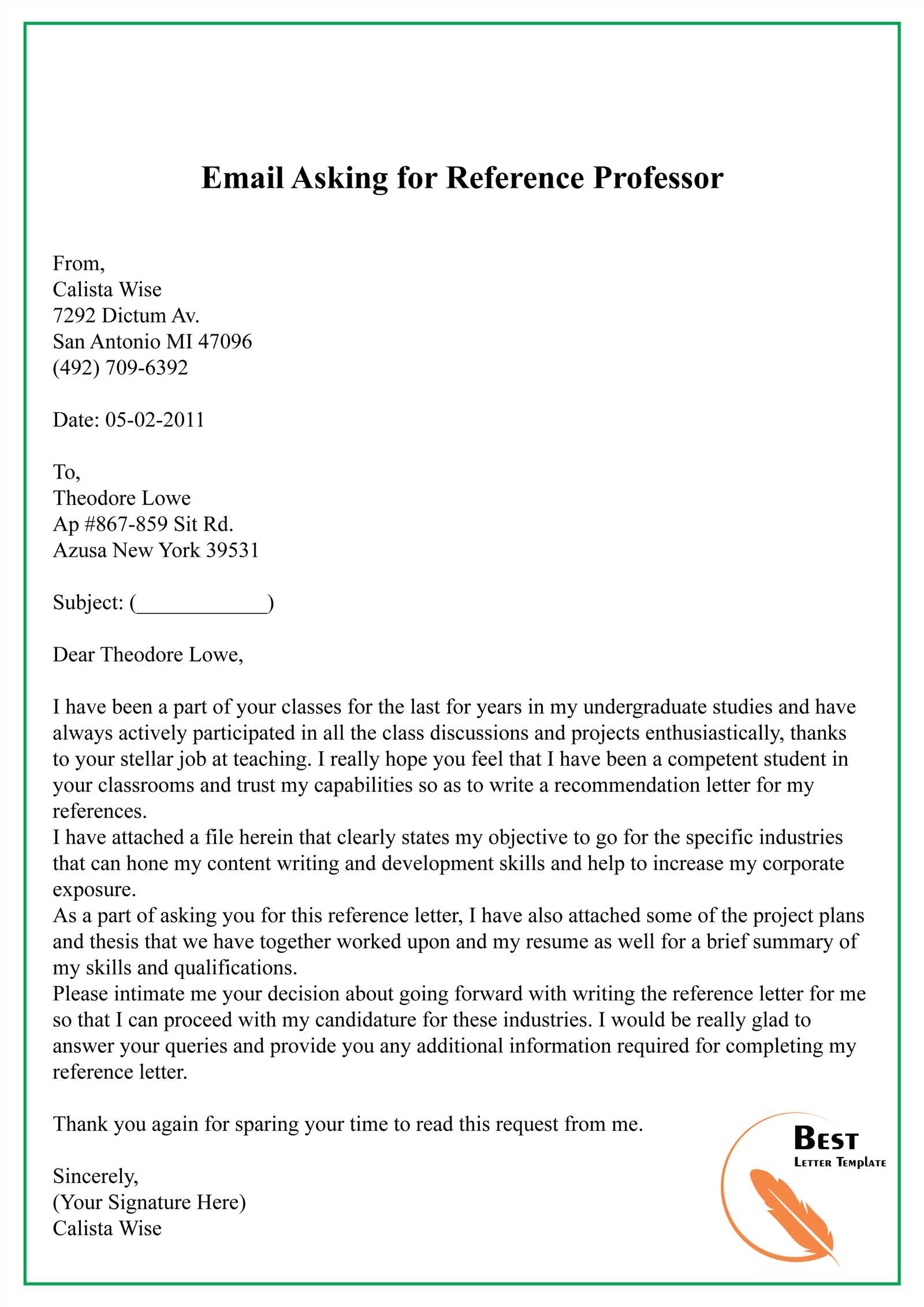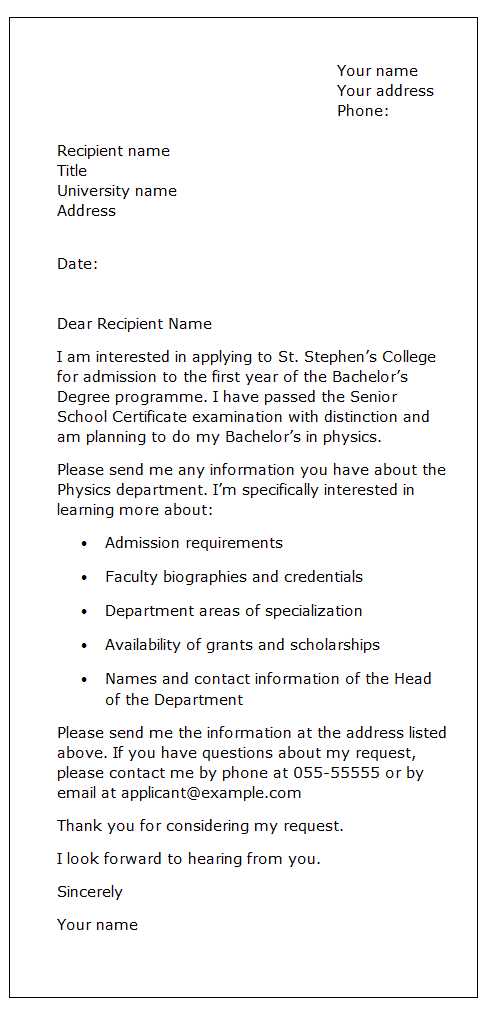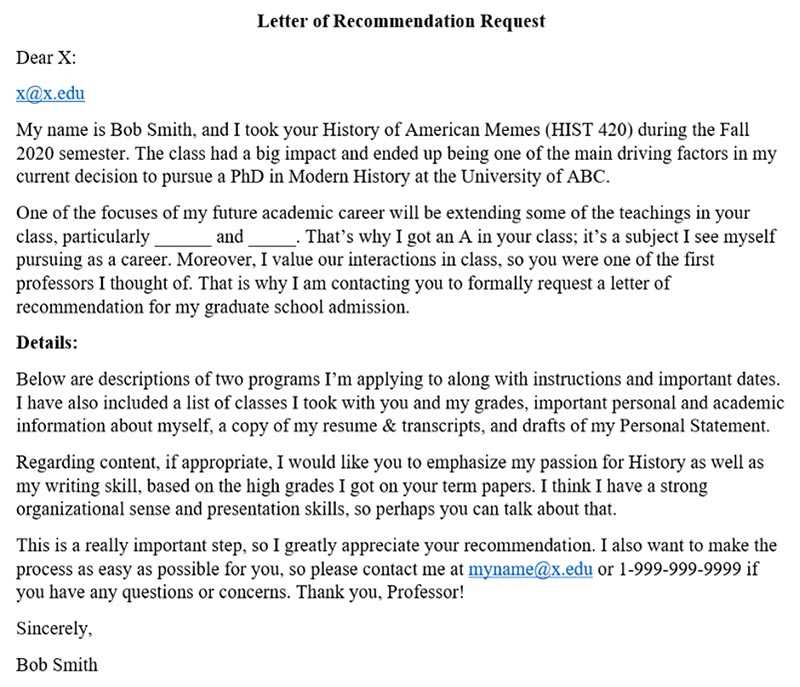Email template asking for recommendation letter

Begin your email with a clear subject line that reflects your request. This will ensure the recipient knows right away what the message is about. For example, “Request for a Letter of Recommendation.” It’s polite and helps manage expectations.
Start the body of your email by directly addressing the recipient. If you have a close relationship, feel free to begin with a warm greeting. Then, get straight to your request. Make it clear why you are asking them specifically for this recommendation, and outline what makes their endorsement meaningful to you.
Explain what the letter is for. Whether it’s for a job application, academic program, or a scholarship, provide context. Mention any deadlines and how they might submit the letter, either by email or through an online platform. Be sure to include any details they might need to craft a thoughtful letter, such as your achievements, experiences, or qualities you’d like them to highlight.
Conclude by thanking the recipient for their time and consideration. Reassure them that you understand if they’re unable to accommodate the request. You could end with a phrase like, “I truly appreciate your help with this,” to show gratitude and professionalism.
Email Template Asking for Recommendation Letter
Subject: Request for a Recommendation Letter
Dear [Professor/Dr./Mr./Ms. Last Name],
I hope you’re doing well. I am reaching out to ask if you would be willing to write me a recommendation letter for [state purpose, e.g., a graduate school application, a job opportunity]. Given your familiarity with my [mention your work together or relevant experience], I believe your perspective would provide valuable insight into my [mention qualities or skills you want highlighted, e.g., academic strengths, professional growth, or leadership abilities].
Key Points to Consider
If you are able to assist me, I would be happy to provide any information that would make the process easier, such as my resume, personal statement, or details about the [position/degree] I’m applying for. If you need additional context about the specific aspects I hope to emphasize, please feel free to reach out.
I understand your time is valuable, and I truly appreciate your consideration of my request. If you agree to write the letter, I would be grateful if it could be submitted by [mention deadline], but I can provide a more flexible timeline if needed.
Thank you again for your support. I look forward to hearing from you.
Sincerely,
[Your Name]
Choosing the Right Person to Request a Recommendation

Identify someone who knows your work well and can speak to your specific strengths. A strong recommendation comes from a person who has seen you in action and can provide detailed examples of your abilities and achievements. Choose someone who understands the context of your request–whether it’s for a job, college application, or other opportunities. The more relevant their experience with you, the stronger the letter will be.
Look for Authority in the Area
Seek individuals who hold a position of authority or credibility in the field you’re applying to. A recommendation from someone well-respected in your industry or academic field carries more weight. Their endorsement will add value to your application, offering both credibility and a professional perspective on your potential.
Choose Someone Who Will Speak Positively About You
Select a person who will speak honestly and positively about your skills and character. If you’re unsure whether they will provide a strong recommendation, have a conversation with them first to gauge their willingness and comfort with writing a letter for you. A recommendation that feels insincere or lacks detail can hurt your application more than it helps.
How to Politely Introduce Your Request in an Email
Begin by acknowledging the recipient’s time and expressing gratitude. Acknowledge their busy schedule to show respect for their commitments. This sets a considerate tone for your request.
Clearly state the purpose of your email early on. Avoid being vague; instead, outline your request in a straightforward manner. For example, “I am reaching out to kindly ask for your support with a letter of recommendation for my application to [specific program or opportunity].” This helps the recipient understand exactly what you are asking for without unnecessary elaboration.
Offer any necessary context briefly. If relevant, mention why you are approaching this person specifically and how their expertise or experience aligns with the request. Be brief and focused–this provides clarity without overwhelming the recipient with details.
Be polite and avoid making the request sound like an imposition. Use phrases like “I would greatly appreciate” or “It would mean a lot to me” to convey your appreciation while maintaining respect for their time.
Finally, provide any helpful details or materials they might need, such as deadlines or guidelines for the recommendation letter. This makes the process smoother for the recipient and shows that you have considered their time and effort in advance.
Providing Clear Context for the Recommendation Letter
Clearly outlining the purpose of the recommendation letter helps the recommender understand exactly what you need. Specify the position or program you are applying for and any relevant deadlines. If the letter is meant to support a scholarship application, mention the scholarship’s criteria or any attributes the organization values. This enables the writer to tailor the letter effectively.
Details to Include in Your Request
- Position or Program: Mention the exact role or academic program, along with any specific qualifications or experiences the committee is looking for.
- Key Points: Highlight the qualities or achievements you would like emphasized, such as leadership, teamwork, or specific projects you’ve worked on together.
- Deadline: Provide the deadline for submitting the letter and any preferred submission method (e.g., email, online portal).
- Instructions: If there are any guidelines (length, format, or particular topics), share those as well.
Making It Easy for the Recommender
- Provide Supporting Materials: Share your resume, personal statement, or any other documents that offer insight into your qualifications and goals.
- Offer Examples: Suggest specific examples or projects where you excelled that the recommender could include to strengthen the letter.
- Be Open to Feedback: Encourage the recommender to ask questions if they need further clarity about your goals or the purpose of the letter.
Including Necessary Deadlines and Submission Guidelines
Clearly state your deadlines for the letter of recommendation. This helps the recommender plan accordingly. Specify the exact date when the letter is due and, if applicable, provide details about the submission method, whether it is through an online form, email, or physical mail.
Submission Format and Process

Provide clear instructions on how to submit the letter. If the submission is online, include the relevant links or access codes. If the submission involves email, mention the specific email address where the letter should be sent. Ensure the recommender understands whether to attach the letter as a document or input it directly into a form.
Additional Information to Include
Let the recommender know if there are any specific points you would like them to address in the letter. It’s also helpful to inform them about any additional documents, such as your resume or personal statement, which might assist them in writing the letter. This ensures that the letter is tailored to meet all the requirements.
Offering Support with Information or Drafts
Provide your recommender with relevant details to make the process easier. Share specific achievements, projects, or experiences you would like them to highlight in the letter. This not only saves time but also ensures that the recommendation is tailored to your strengths. Be clear about what the letter should focus on, such as your skills, character, or accomplishments related to the opportunity.
Drafting the Letter

If you feel comfortable, offer to draft the recommendation letter yourself. This will give your recommender a solid starting point, and they can adjust it as needed. Write it in a way that reflects your goals and ensures consistency with the tone they would use. This approach can be especially helpful if they are short on time or unsure of what to include.
Providing Supporting Materials
Include any documents that can help shape the recommendation, such as your resume, a list of relevant courses, or examples of your work. If your recommender is familiar with your accomplishments, this can reinforce the points you want to make. Offering these materials ensures that the letter will be specific and meaningful, strengthening your case.
Following Up on Your Request Respectfully
Start by acknowledging the time the recipient has already dedicated to your request. A simple thank you shows appreciation for their consideration. Keep the tone polite and understanding of their busy schedule.
Ensure that the follow-up message is concise and clear. Let them know that you are still interested in receiving their recommendation and that you understand they may need more time. You can offer additional context or highlight any upcoming deadlines if necessary.
Avoid being pushy. Instead of demanding an immediate response, express your willingness to be flexible with their timeline. Be sure to include your contact information so they can reach you with ease.
Here is an example of how to follow up respectfully:
| Subject | Follow-up on Recommendation Letter Request |
|---|---|
| Message |
Dear [Recipient’s Name], I hope this message finds you well. I wanted to kindly follow up on my request for a recommendation letter. I understand you are very busy, and I appreciate your time and consideration. If you need any additional information or context, please feel free to let me know. I would be grateful for your support, and I understand if your schedule requires more time. Please let me know if there is anything I can do to assist you. Thank you again for your help. Best regards, [Your Name] |
By sending a considerate and brief follow-up, you show respect for the recipient’s time and increase the likelihood of receiving the recommendation in a timely manner.